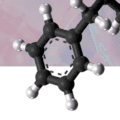Cocaine Harm Reduction tips are a special case of Harm Reduction for Stimulants strategies and aim to minimize the negative consequences associated with its use, particularly focusing on reducing the risks of addiction, overdose, and associated health problems. These approaches acknowledge that complete abstinence may not be immediately achievable for everyone, so they seek to mitigate harm and improve overall well-being. Here are some key points to consider:
Education and awareness: Providing accurate information about the risks and potential harms associated with cocaine use is crucial. This includes educating individuals about the physiological effects, potential for addiction, and the impact on mental health.
Safer consumption practices: Encouraging safer ways of using cocaine can help reduce harm. This involves advising against risky routes of administration like injection, which can lead to additional health complications such as infections and blood-borne diseases. Encouraging snorting or smoking as alternatives may help reduce some of the associated risks. But even these methods of use can be dangerous without proper knowledge and approaches
Testing and harm reduction supplies: Promoting the availability of drug testing kits can help users identify the presence of harmful adulterants or contaminants in cocaine. Additionally, distributing harm reduction supplies like sterile equipment, and safer smoking kits (e.g., glass pipes) can reduce the risks.
Overdose prevention: Educating individuals about the signs and symptoms of cocaine overdose is essential. Encouraging them to provide First Aid and call emergency services immediately in case of an overdose can be life-saving.
Support and treatment options: Ensuring that individuals have access to support and treatment services is vital. This includes promoting counseling, therapy, and support groups to address underlying issues contributing to cocaine use, as well as providing information on available treatment options, such as medications and behavioral therapies.
Remember, these harm reduction approaches are aimed at minimizing harm and providing support, but the best course of action is always to abstain from drug use altogether.
Preventing Cocaine Overdose

Preventing cocaine overdose is an important aspect of harm reduction. While complete abstinence is the most effective way to avoid overdose risks, obviously, there are several harm reduction strategies that can help minimize the potential harm associated with cocaine use. Here are some key points to consider:
Educate on dosage and purity: Inform individuals about the varying potency and purity of cocaine available on the market. Encourage them to start with low doses and be cautious when using unfamiliar or stronger batches, as higher purity cocaine increases the risk of overdose.
| Insufflated | |
| ⚪ Light | 10 – 25 mg |
| 🟡 Medium | 25 – 50 mg |
| 🟠 Potent | 50 – 80 mg |
| 🔴 Severe | 80 mg and more |
Rows – dosages in connection with the expected strength of the effects. Column – route of administration.
I have no data on other methods of administration. I’ll update the table when I get them
Avoid mixing substances: Cocaine is sometimes used in combination with other substances, such as alcohol or opioids, which can significantly increase the risk of overdose. Encourage individuals to avoid mixing substances, as their combined effects can be unpredictable and dangerous.
Use with a buddy: Encourage individuals to use cocaine with a trusted friend or someone who can provide assistance if an overdose occurs. This person can monitor their well-being, recognize the signs of overdose, and seek emergency medical help if needed.
Recognize the signs of overdose: Educate individuals about the signs and symptoms of a cocaine overdose, which may include
- chest pain,
- rapid heartbeat,
- high blood pressure,
- seizures, confusion,
- severe anxiety,
- agitation,
- or hallucinations.
Promptly recognizing these signs and seeking emergency medical assistance is crucial.
Naloxone availability: Although naloxone is primarily used to reverse opioid overdoses, it may also have limited effectiveness in reversing some of the effects of cocaine overdose. Encourage the availability and use of naloxone kits, particularly in settings where cocaine use is prevalent, as it can potentially save lives.
During an urgent situation, it is crucial to administer naloxone promptly when an individual who has ingested cocaine drifts into slumber or experiences a loss of awareness. This principle remains valid irrespective of the belief that solely cocaine or an alternate stimulant was consumed. Identifying the precise composition of a white powder is an insurmountable challenge, and the occurrence of impaired or halted respiration cannot be attributed to the typical effects of cocaine, a stimulant.
Emergency response: In the event of a suspected cocaine overdose, emphasize the importance of immediately contacting emergency services (such as calling 911) to ensure timely medical intervention. Stay with the affected person, provide basic life support if necessary, and follow the instructions provided by emergency responders.
Preventing Cocaine Damage to Your Nose and Lungs

Preventing damage to the nose and lungs caused by cocaine use is an important aspect of harm reduction. Prolonged and excessive cocaine use can lead to various health issues in these areas. Here are some harm reduction strategies to help minimize the potential damage. They may overlap with the tactics mentioned above, it is logical to follow or complement them:
Use clean equipment: If cocaine use persists, it is important to use clean equipment to minimize damage. Avoid sharing straws, bills, or other paraphernalia, as this can contribute to the spread of infections. Using your own clean straw or a sterile snorting device can help reduce the risk of infection and damage.
Maintain good nasal hygiene: Proper nasal hygiene is crucial to minimize damage to the nose. Rinsing the nasal passages with saline solution or using nasal sprays specifically designed for nasal care can help remove debris and reduce inflammation caused by cocaine use. Avoid using harsh substances, such as alcohol or hydrogen peroxide, as they can further irritate the nasal lining.
Moisturize nasal passages: The use of a nasal moisturizer or a saline nasal spray can help keep the nasal passages moisturized and reduce dryness, irritation, and potential damage caused by cocaine use.
Avoid excessive force: When snorting cocaine, it is important to avoid excessive force. Using gentle, controlled snorting techniques rather than forceful inhalation can help reduce trauma to the nasal tissues.
Address respiratory symptoms promptly: If you experience respiratory symptoms such as coughing, wheezing, shortness of breath, or chest pain, seek medical attention promptly. These symptoms could indicate lung damage or other respiratory issues related to cocaine use.
Quit smoking: If you are a smoker, quitting smoking is highly recommended. Smoking tobacco in combination with cocaine use can significantly increase the risk of lung damage and other respiratory complications. It is clear that if the health of the lungs and respiratory system is at the head, it is also not worth smoking cocaine
Seek professional help: If you are concerned about the impact of cocaine use on your nose or lungs, it is essential to consult with a healthcare professional. They can assess your condition, provide appropriate treatment options, and offer guidance on quitting cocaine use.
Use Only Your Own Cocaine Paraphernalia

I want to dwell on this point in more detail. In the carousels of a party or under the influence of a substance, one does not think about such things. It is useless to count on the fact that a sensible, balanced, and logical part of consciousness will work and tell you the best move. But to know in advance, to think and remember the information is very important and can be useful.
It is crucial to emphasize the importance of never sharing your cocaine paraphernalia or using someone else’s. Sharing drug paraphernalia, including straws, bills, pipes, or needles, significantly increases the risk of various health problems and complications. Here’s why it is essential to avoid sharing cocaine paraphernalia:
Transmission of infections: Sharing drug paraphernalia can lead to the transmission of infectious diseases. Blood-borne infections such as HIV and hepatitis C can be easily spread through contaminated needles or other equipment. These infections can have severe long-term consequences on health.
Bacterial and viral infections: Cocaine paraphernalia can become contaminated with bacteria or viruses, such as staphylococcus aureus or herpes. When shared, these pathogens can be transferred from person to person, leading to infections and other related complications.
Cross-contamination: Sharing paraphernalia can result in cross-contamination, where different substances, such as cocaine and other drugs, mix together. This can have unpredictable and potentially harmful effects on the individual’s health, increasing the risk of adverse reactions or overdose.
Damage to nasal and respiratory tissues: Sharing straws or other snorting devices can cause physical damage to the nasal tissues, including irritation, inflammation, and potential perforation of the nasal septum. Additionally, using contaminated paraphernalia can introduce harmful substances or bacteria into the nasal passages, further exacerbating these issues.
To prioritize your health and minimize the risk of harm, it is important to adhere to the following recommendations:
- Always use your own paraphernalia: Use only your personal, clean, and sterile paraphernalia when using cocaine. This includes straws, bills, pipes, or any other equipment specific to your use. Avoid using items that may have been previously used by others, even if they appear clean.
- Properly dispose of used paraphernalia: After using cocaine, safely dispose of your paraphernalia in a responsible manner. Utilize designated sharps containers for needles and ensure proper disposal of other equipment. This helps prevent accidental needlestick injuries and minimizes the risk of exposure to others.
- Encourage others to do the same: Promote harm reduction practices among your peers and discourage sharing of cocaine paraphernalia. Educate others about the risks involved and encourage them to adopt safer habits. This point is especially true of any recommendations for Harm Reduction.
- And please, never ever, under any circumstances, use rolled-up banknotes. This is one of the dirtiest items that you hold in your hands with a bunch of germs, viruses and other particles and reagents. Do not put all this inside yourself, especially in the part that you normally inhale, and where there is a sensitive mucous membrane that comes into contact with a highly active chemical substance.
Avoid binging on cocaine

Avoiding binging on cocaine is essential for minimizing the potential harm and risks associated with its use. Binging refers to the repeated and excessive use of cocaine over a short period, often resulting in intensified effects and a higher likelihood of negative consequences. Here are some key points to consider in order to avoid binging:
Set limits and plan ahead: Before using cocaine, establish clear limits for yourself regarding the amount and frequency of use. Stick to these limits and avoid deviating from your planned usage pattern. Planning ahead helps prevent impulsive and excessive consumption.
Be mindful of tolerance and dose escalation: With repeated use, tolerance to cocaine can develop, leading to the need for higher doses to achieve the desired effects. However, escalating doses can significantly increase the risks of overdose and other health complications. It is important to be aware of this potential tolerance and avoid increasing your dose to dangerous levels.
Pace yourself and take breaks: Avoid using cocaine in rapid succession or back-to-back. Allow your body time to recover between uses. Taking breaks and spacing out your cocaine use can help prevent the cycle of binging and reduce the strain on your body.
Seek support and accountability: Engage with a support system or trusted individuals who can provide guidance and hold you accountable for your substance use. Share your concerns and goals with them, and allow them to support you in maintaining healthy habits and avoiding binging behavior.
Identify triggers and develop coping strategies: Be aware of the situations, environments, or emotions that may trigger a desire to binge on cocaine.
If you find it challenging to control or moderate your cocaine use, or if you are experiencing negative consequences, it is essential to seek professional help from healthcare providers or addiction specialists. They can provide personalized support, resources, and treatment options to address addiction and promote recovery.
Avoid using cocaine to prevent the withdrawal comedown

We discussed in detail the symptoms, timings, approaches to recovery, and other features in the article Stimulant Withdrawal. The comedown, also known as the “crash,” refers to the period when the effects of cocaine wear off, and the body and brain experience a temporary imbalance due to the drug’s influence. Here are some key points to consider:
Understanding the comedown: The comedown from cocaine can be characterized by feelings of fatigue, depression, irritability, anxiety, and an intense craving for more cocaine. It occurs as the brain and body adjust to the absence of the drug’s stimulating effects.
Practice self-care: Prioritize self-care activities to promote physical and mental well-being. Get enough sleep, eat a balanced diet, exercise regularly, and engage in activities that bring you joy and fulfillment. Taking care of yourself can help reduce the intensity of withdrawal symptoms and improve overall resilience.
Supportive environment: Surround yourself with a supportive environment that encourages sobriety and recovery. This may involve distancing yourself from individuals or situations that can trigger cravings or tempt you to use cocaine.
Develop coping mechanisms: Engage in healthy coping mechanisms to manage the challenges of withdrawal and cravings. This may include participating in support groups, therapy, mindfulness practices, exercise, hobbies, and seeking social support from friends and family.
Stay focused on long-term goals: Remind yourself of the reasons why you want to avoid cocaine use and the benefits of maintaining sobriety. Set realistic goals for yourself and celebrate your achievements along the way. Stay focused on the long-term benefits of a healthy, drug-free life.
Seek professional help: If you are experiencing withdrawal symptoms or struggling with cravings, it is important to seek professional help from healthcare providers or addiction specialists. They can provide guidance, support, and appropriate treatment options to manage withdrawal symptoms and prevent relapse.
Medication-assisted treatment: In some cases, healthcare providers may recommend medication-assisted treatment to support the recovery process. Certain medications can help manage withdrawal symptoms and cravings, increasing the chances of successful recovery. Consult with a healthcare professional to determine if this approach is appropriate for you.
Summary

Cocaine, as one of the classic stimulants, for many people is an attractive addition to rest, a source of inspiration, confidence, and even a sign of status. However, it should, first of all, be considered as an addictive agent, which, with a careless attitude and lack of knowledge and supportive approaches, can deprive a person of rest, inspiration, confidence, and status. Principles, strategies, and tactics of Harm Reduction can become a lifeline for everyone here.
✔️
This marks the finish of today’s session. It is my hope that this piece was enlightening.
If you desire to advance the growth of this blog, I suggest the following actions:
- Subscribe to our social networks.
- Circulate a link to this article among your associates.
- Give recognition to this blog on relevant platforms or discussion groups.
Should you identify any necessary additions or corrections in this article, feel free to initiate a dialogue with me via Contact Form. I am always open to communication.
I appreciate your valuable time and consideration ❄️




